It's commonly known as the Mediterranean lineseed, but I like scientific names in the tittle ... they can look or sound pretty cool. This one could easily be the name of a female protagonist or villain in some campy SF book.
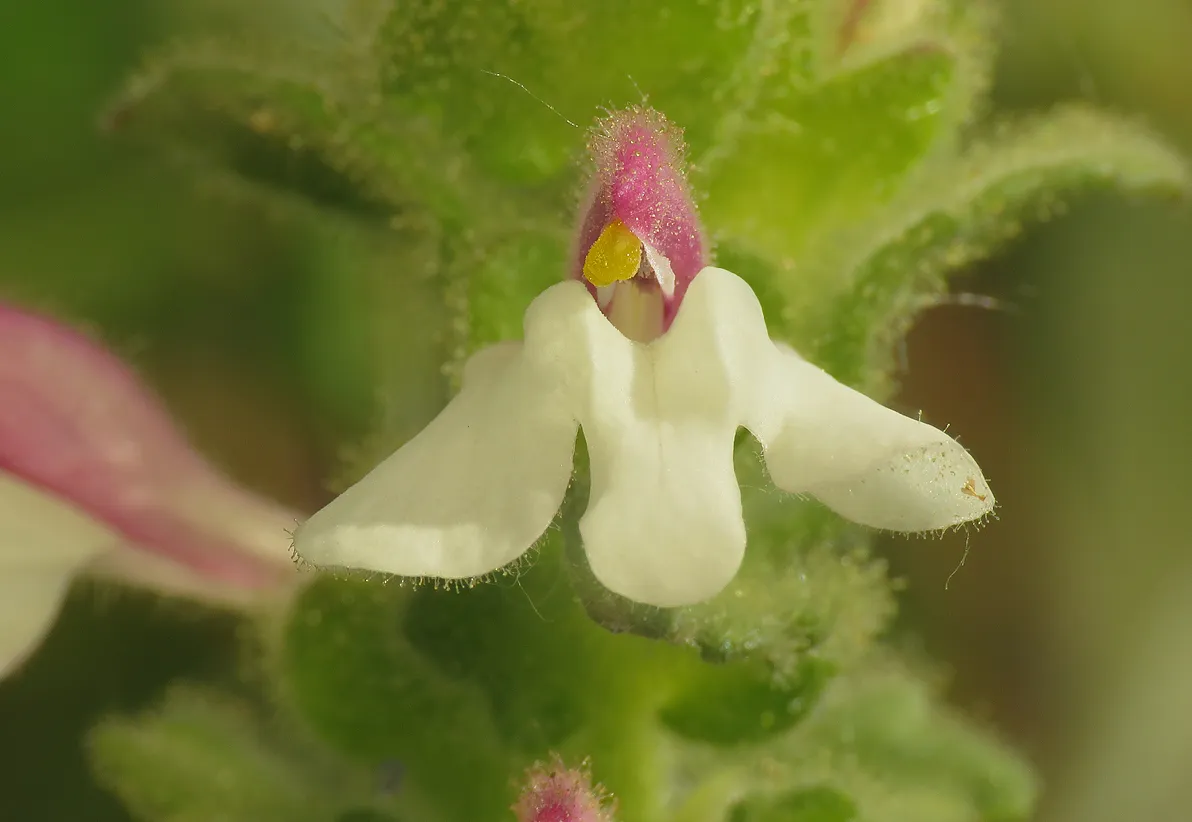
This plant with lovely, interestingly shaped flowers is native to the Mediterranean basin, but has been introduced in other places with similar climate, in other parts of the world.
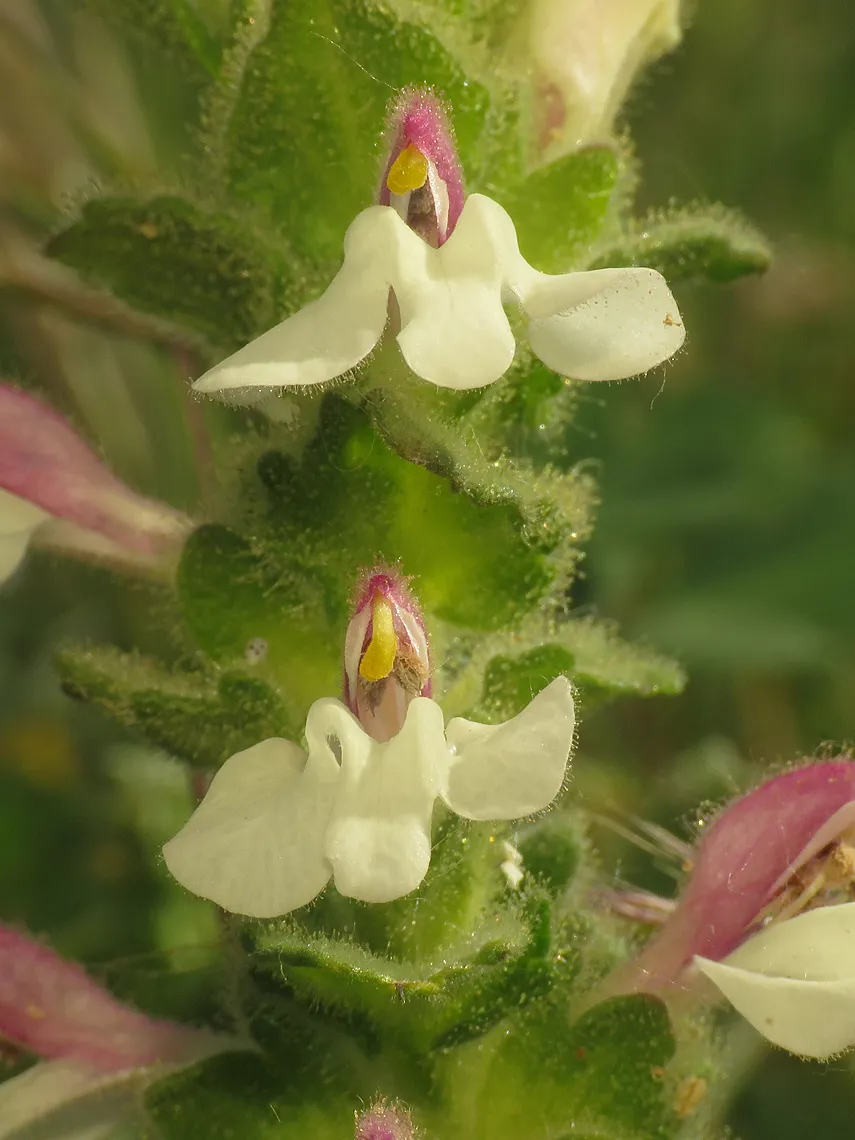
It grows in dry & sunny open spaces, often on poor, stony soil ... and is very common on the coastal meadows here where I live - the Istra peninsula, northern Adriatic, in Croatia.
It's an errect, relatively robust plant that can be about half a meter tall when completely developed. Bellardia trixago is a plant from the Orobanchaceae family ... which means that Bellardia trixago is a Broomrape. Broomrapes are mostly parasitic plants with strange yellow, red or brown coloration that makes them look (at first glance only) like desiccated remains of green plants. Their color is a clear sign that they don't use chlorophyll to produce nutrients. Most Broomrapes get all they need through the roots of the host plant. The organs with which they do that are called haustoria. (a term that I never heard before) These are root - like structures that penetrate the host's tissue and draw water and nutrients.
But Bellardia trixago is green, so before writing this post, I wasn't aware that this is a Broomrape.
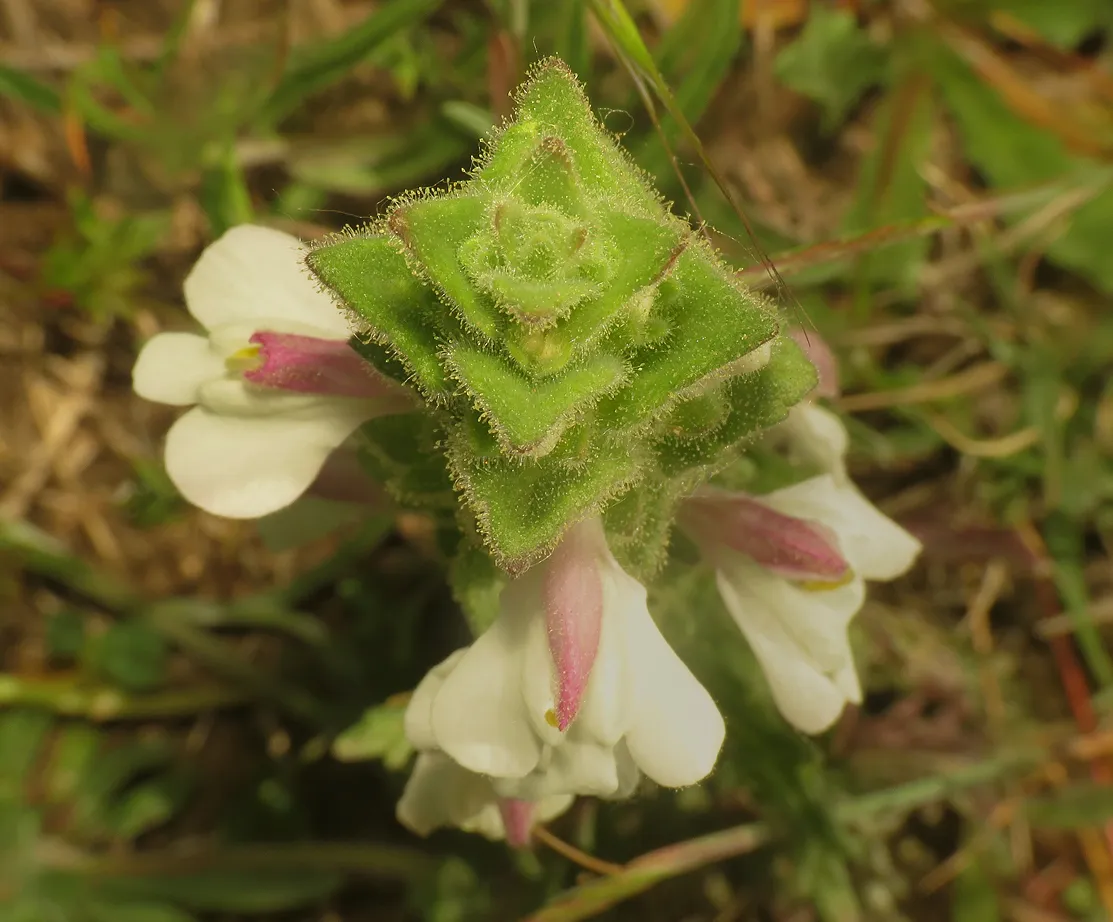
I found out that this is a Broomrape as soon as I opened the short Wikipedia article about it ... and the next question immediately came to my mind : Is this also a parasite? I mean, it obviously has some chlorophyll, so maybe is not.
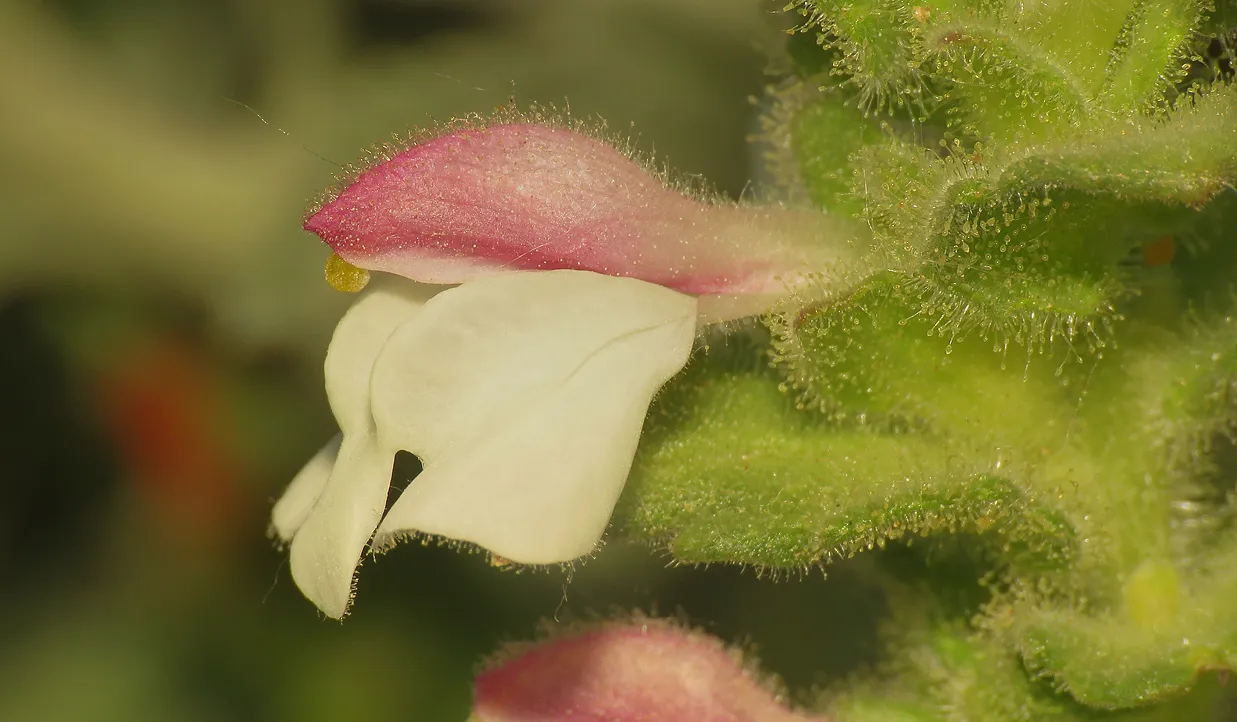
While searching for the answer, I learned a new word ... new term - hemiparasitic ... which means more or less, partially parasitic. It has chlorophyll, it produces some percentage of its nutrients, but is also connected to the roots of another plant, so it gets some stuff from there too. The best of both worlds.
One thing I didn't find through my internet search, is the names of the host plants, so I can't tell you exactly on which plants Bellardia trixago parasitizes ... but I can tell you about what I saw. The lineseed plants, I photographed near the sea, were surrounded by various grasses, so I suppose that the grasses are among the hosts of this green parasite. I took these photographs about a month ago, in the last days of May, when the plants were in good shape. Yesterday I saw that many of them have dried out. The following photograph ...
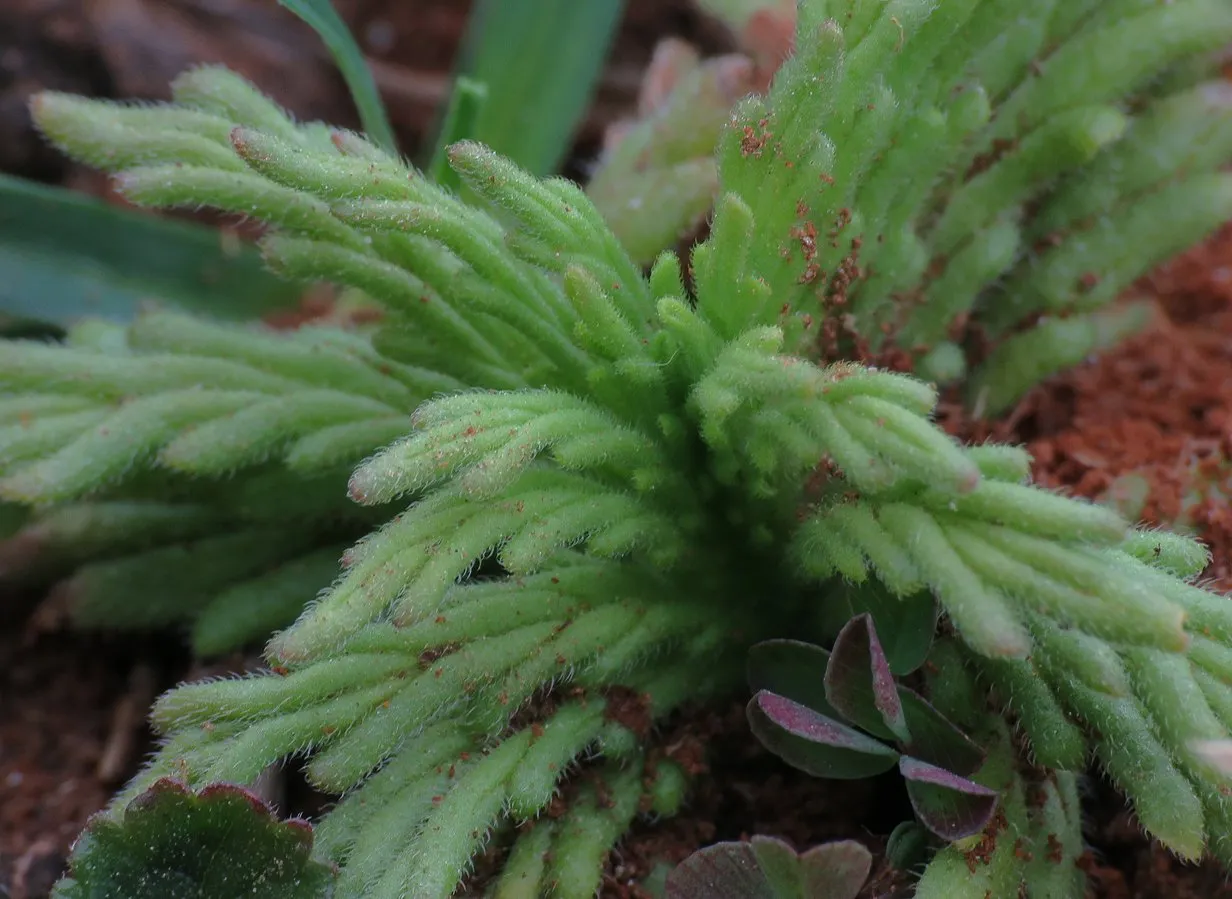
... was taken on 27. March 2021 ... and I didn't know what I was photographing ...
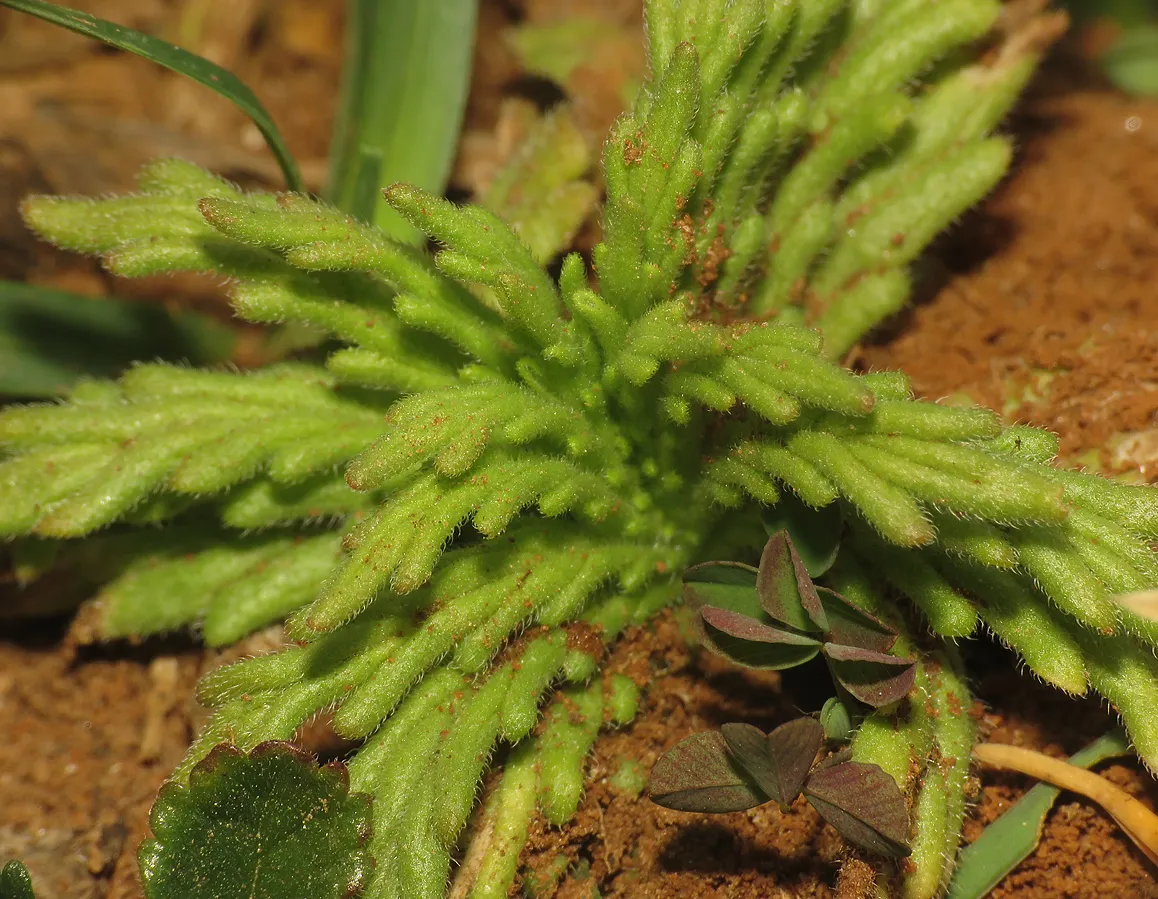
... the young plant near the dusty road that leads to the sea looked cool, so I took a few shots.
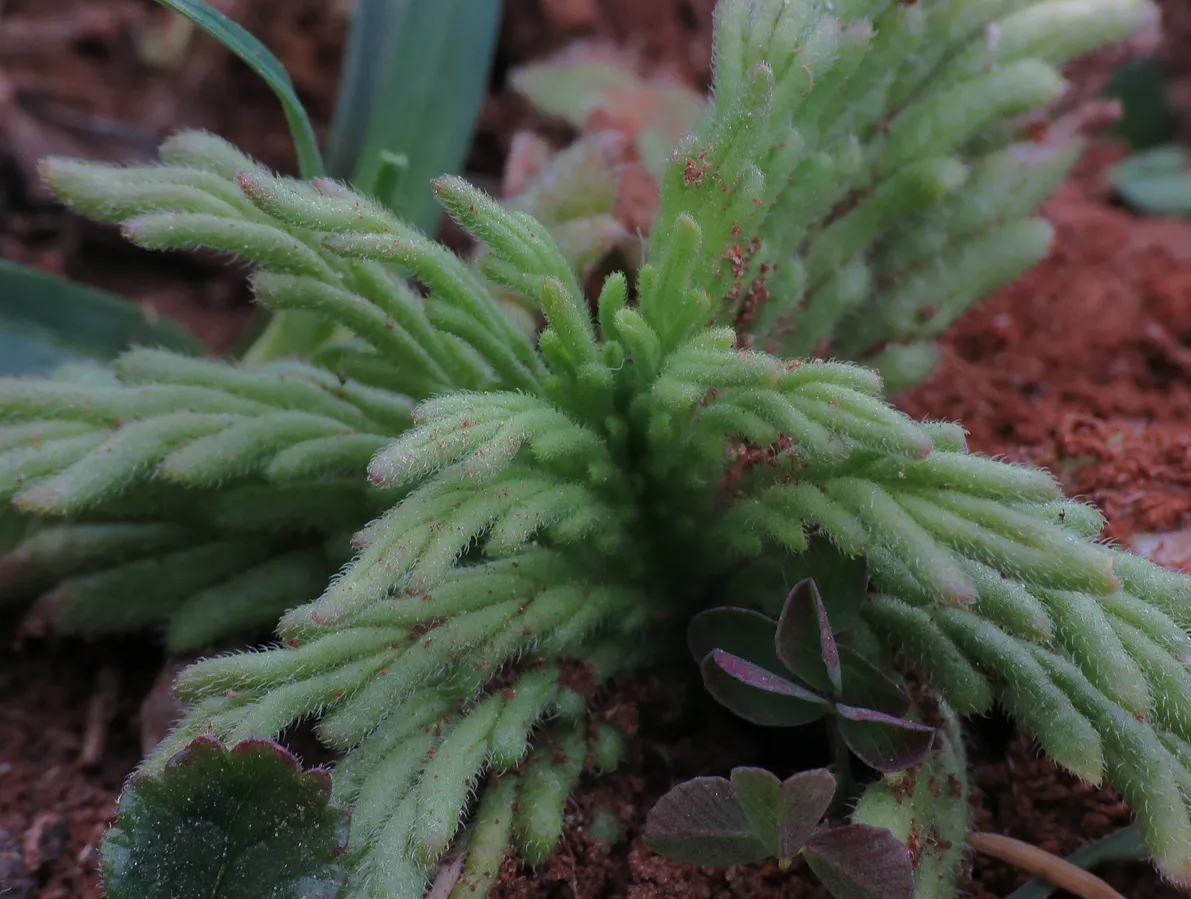
Only this morning, very early in the morning, when I started digging through older folders in search for more photographs that can illustrate this post ... I noticed the similarities between these young leaves and the ones of the developed plant ... and after some more searching and comparing them to some Internet sources, I can tell you that this is definitively the young version of the Bellardia trixago plant.
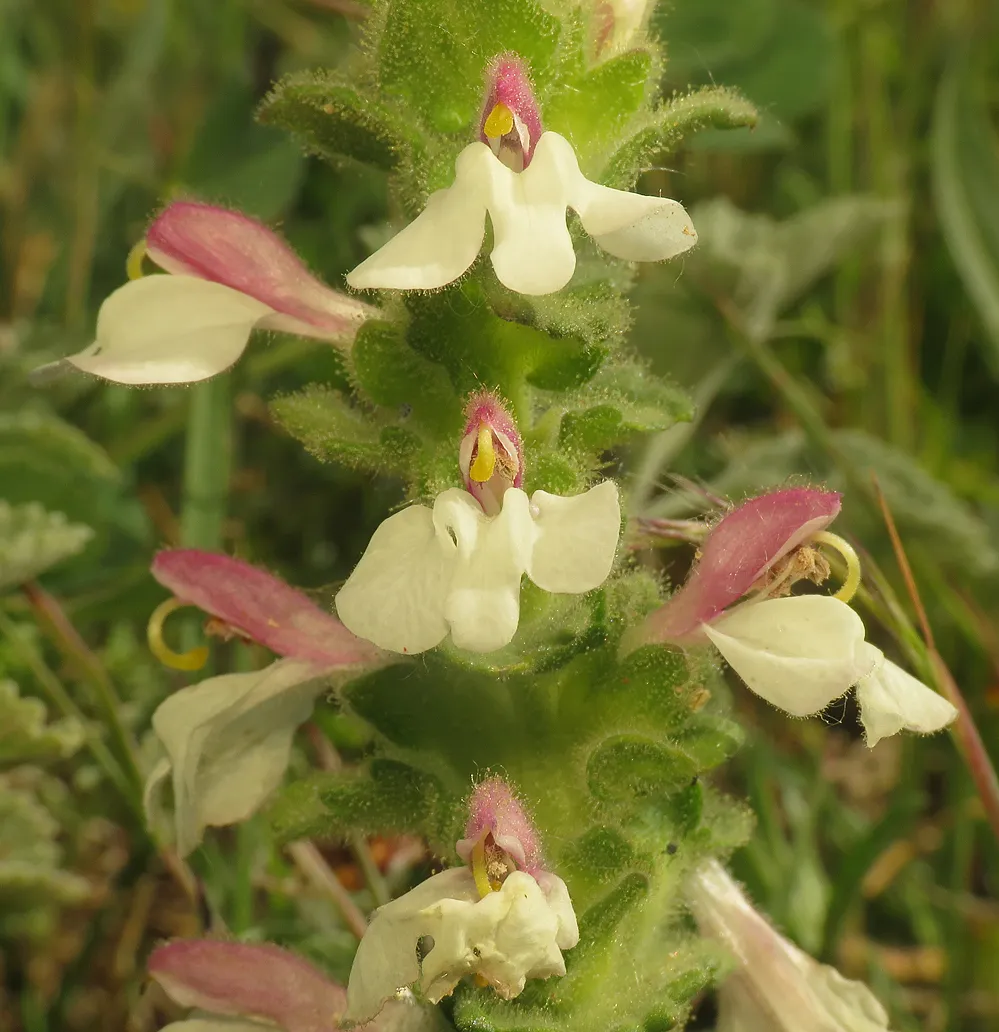
And that's all ... just a few words about Bellardia trixiago, a small botany talk before I go back to the coastal meadows, in search of interesting stuff to shoot with my camera.
As always in these posts on HIVE, the photographs are my work ... I took some information about this plant from the following Wikipedia articles, but the text isn't a copy - paste affair.
https://en.wikipedia.org/wiki/Bellardia_trixago
https://en.wikipedia.org/wiki/Orobanchaceae

